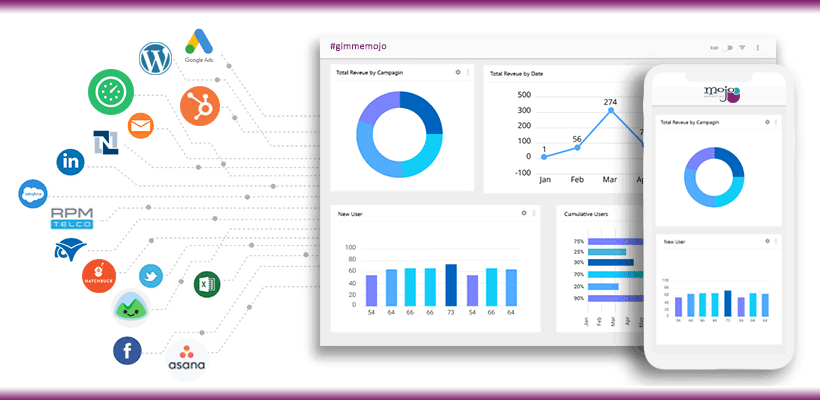As an inbound digital marketing agency, closed-loop marketing, analytics, and reporting are the systemic foundations on which we build successful growth strategies. The ability to tie our client’s business objectives, a holistic marketing plan, and sales processes together to produce tangible results all stems from taking a data-driven approach that allows for continuous learning and growing.
What is a closed-loop system?
Closed-loop marketing is simply using a data-driven approach to continuously build on digital brand and inbound marketing funnel strategies that move users through the buyer’s journey to meet strategic business objectives.
With the ongoing advancements in technologies, marketers can apply well-planned marketing automation strategies that create thoughtful user experiences while increasing team efficiency and improving cost effectiveness.
Closed-loop analytics is the method for attributing, extracting, and segmenting marketing and sales data. This is measured throughout the entire customer lifecycle – starting from the very first interaction source (how a user first comes to your website) all the way to through the end of the relationship.
Data is then transformed and organized for reports that allow for analysis and insight into user behavior patterns.
Closed-loop reporting is a crucial part of a business intelligence (BI) system that – in combination with other business intelligence reports – enhances decision-making across all company levels.
Loading organized data for visualization in reports is a key part of using a data-driven marketing approach. Visualizing data in charts, graphs, and tables makes it easier to derive meaningful insights, which can lead to implementing tests that optimize marketing and sales results.
With this system in place the loop is closed!
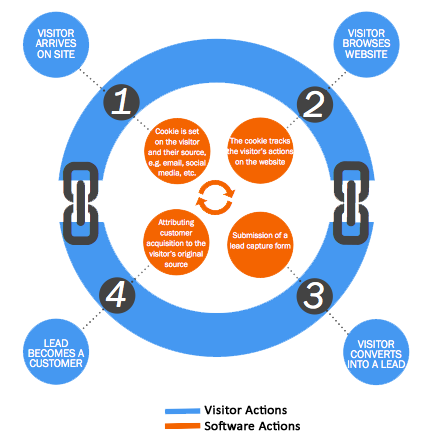
Closed Loop Marketing Visualization (credit: hubspot)
Why it matters
It’s no secret that most telecommunications, information technology, and cloud software companies have long(er) buyer journeys. Leads can come from a variety of sources and start interacting with your business – all at different stages of the buyer’s journey.
Without a proper reporting system in place, it can be difficult – almost impossible – to identify what stage leads are at in the inbound marketing funnel. It’s even harder to properly attribute which efforts are responsible for each new acquisition and how valuable (or costly) each acquisition is.
The question we should be asking is: how can we increase efficiency and deliver maximum value [for our clients]?
For most of our clients, the key, high level metrics are:
Dan Rooney, VP Operations.
Efficiency = Optimized Cost of Acquisition
Maximum Value = Total Revenue/Time
Without insight into acquisition costs, it’s difficult to confidently continue to invest in marketing efforts. Return on investment (ROI) remains unknown, and without knowing ROI, new acquisitions may be coming at a cost (no pun intended).
A well-defined, closed-loop marketing system provides the level of insight needed to make confident, informed business decisions that ultimately lead to increased profit margins.
Why it matters for customers – end-users – the ones being marketed to:
End users get a personalized experience that only delivers information relevant to wants and needs. Not personalized in a creepy way – personalized so there are no moments of frustration, and they don’t feel like they’re being sold to. Rather, they feel as though they are being provided with information to make their own decisions.
7 Important Benefits of a Closed-Loop Marketing System
1. Improved Marketing and Sales Collaboration with Contact Lifecycle Data
Marketing and sales teams can finally be on the same page… what?!
Closed-loop reports provide full visibility into contact lifecycle data in an easy-to-dissect way for both teams.
Sales: see what marketing is doing to tee you up with qualified leads.
Marketing: no more guessing if leads are converting and efforts lead to positive return on investment (ROI).
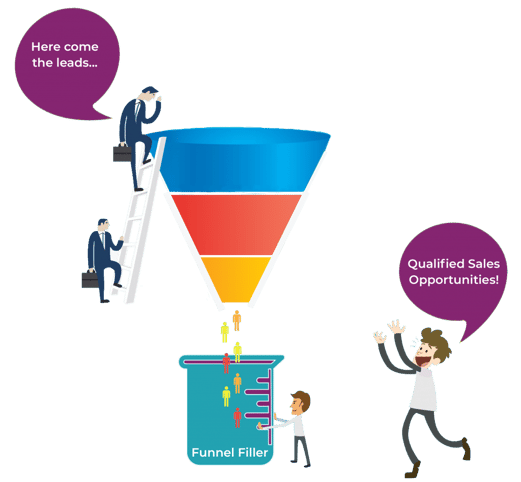
2. Best-in-Class User Experience
Understand what your users really want and deliver it to them in a frictionless manner. Not only does this system create better inbound funnel experiences for your users across different verticals and devices, it also provides valuable insight into opportunities to improve experiences at a company wide level.
Bonus: apply a specific account-based marketing (ABM) strategy to complement your in-bound efforts. Closed-loop allows for extremely targeted ABM.
How: understand the patterns of companies that you have won versus companies “lost.” With this data, you’ll be able to adjust messaging and content based on targeted company behaviors to better serve their interests and needs.
3. Increase Speed to Lead
When you have marketing and sales working together to create a best-in-class user experience, information becomes more specific to each user’s wants and needs. Giving your users what they need to make decisions in a manner they are familiar with makes the process that much smoother.
Keep in mind, buying behaviors are different today than they were even five years ago. There is so much information readily available that most of the time, your ideal users are coming to your site having already done some research.
With a closed-loop system in place, user behaviors can be leveraged to position different messaging and dictate what information gets displayed to maximize that user’s time on your site. Showing only relevant information through a frictionless interface allows users to get everything they need to make their decisions faster.
Start Using These 4 Strategies for Better Telecom Lead Generation Now
4. Increase Conversion Rates
Closed-loop reports will include conversion measurements across all lifecycle stages. With time, you’ll establish baseline conversion rates, and analysis will inform optimization areas where conversion rates can be improved upon.
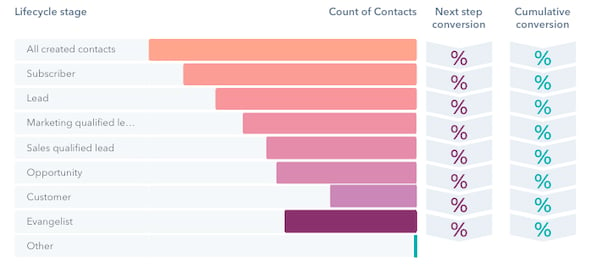
Visitors > Subscriber > Lead > MQL > SQL > Opportunity > Customer (Closed Won) > Evangelist (Super fan)
Fun fact – we recently became a Hubspot Gold Partner!
5. Lower Cost Per Acquisition
With a closed-loop marketing system, you can track and report on channel (source / medium) and campaign performance through the entire customer lifecycle. With this level of information, you can dissect which assets are playing a role in moving users down your funnel(s), and which are not.
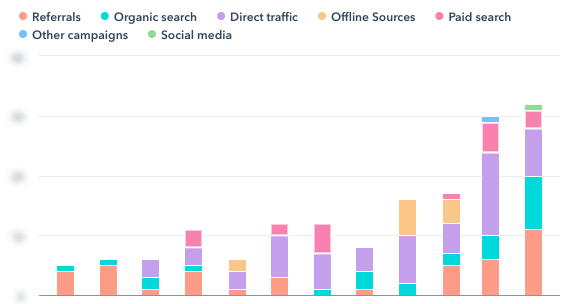
Tip: If you’re not doing so already, add a UTM parameter to your in-bound URLs. This allows you to identify where your traffic is coming from while tracking the performance of each asset. Google has a great tool for building UTM parameters – Campaign URL Builder.
6. Improve Company Profit Margins
From a business standpoint, profitability is truly what matters. Here are just a few of the ways that everything works together to ensure maximum value. Implementing a closed-loop marketing system is an important piece in ensuring total revenue and profitability are continuously improving.
- Reduce marketing costs that don’t drive results
- Proper budget allocation for future campaigns
- User-defined asset creation
- More qualified “at bats” for sales team
(Increased conversion rates) / (Increased speed to lead) = Increased opportunities
note: Increased speed to lead is actually lowering the time to conversion!
7. Set up to Scale Efficiently (Budget and Time)
The closed-loop system is running smoothly, users are benefiting from an experience that resonates with their needs, marketing and sales are collaborating at an all-time high, and company profitability is up… time to double down on what’s working!
(Increased opportunities ^(Best in class UX)) / (Reduced time + lower CPA ) = Increase in Company Efficiency and Value!
note: Increased opportunities ^(Best in class UX) can have an exponential effect on a business’s growth!
__
Having good, clean data is the key to a closed-loop system that you can use to efficiently scale a business!
Here’s a list of 17 data driven marketing tools and tactics that you can use or implement today!
